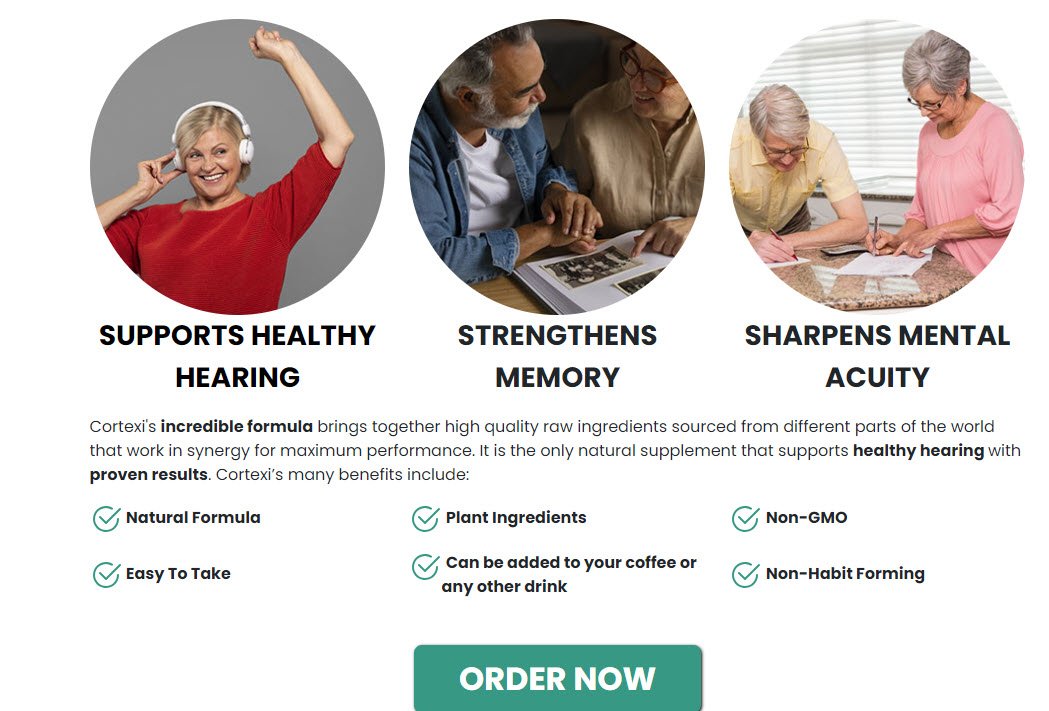Are you passionate about raising awareness for mental health? Do you have a desire to connect with others who may be going through similar struggles? If so, creating a successful blog for mental health awareness could be the perfect platform for you to share your experiences, offer support, and provide valuable resources. This article will guide you through the steps of creating and publishing a blog that can make a real impact in the lives of those dealing with mental health issues. From brainstorming topics to promoting your content, this comprehensive guide will equip you with the tools to create a thriving blog that promotes understanding and fosters a sense of community.
- Choosing a Topic for Your Mental Health Blog
- Understanding your target audience
- Identifying a specific focus for your blog
- Researching popular mental health topics
- Setting Up Your Blog
- Choosing a blogging platform
- Selecting a domain name
- Setting up hosting
- Installing a content management system
- Designing Your Blog
- Selecting a theme that reflects your blog’s purpose
- Customizing your blog’s layout and design
- Creating a user-friendly navigation menu
- Content Creation and Planning
- Developing a content strategy
- Identifying relevant keywords for SEO
- Planning an editorial calendar
- Writing Engaging Blog Posts
- Crafting compelling headlines
- Using storytelling techniques
- Incorporating personal experiences
- Including statistics and research
- Creating High-Quality Visuals
- Selecting appropriate images and graphics
- Creating original visual content
- Optimizing visuals for faster loading
- Promoting Your Mental Health Blog
- Utilizing social media platforms
- Collaborating with other bloggers or mental health organizations
- Guest posting on related sites
- Building a Strong Community
- Encouraging reader engagement and comments
- Responding to audience feedback
- Offering support and resources to your readers
- Monitoring and Analyzing Blog Performance
- Tracking website traffic and engagement
- Analyzing SEO metrics
- Using analytics tools to gain insights
- Maintaining Your Mental Health Blog
- Regularly updating and refreshing content
- Monitoring website security
- Backing up your blog’s data
Choosing a Topic for Your Mental Health Blog
When it comes to starting a mental health blog, choosing the right topic is crucial. It’s important to select a focus that resonates with your target audience and allows you to provide valuable and engaging content. To understand your target audience better, consider who you want to reach with your blog. Are you targeting individuals struggling with specific mental health issues, such as anxiety or depression? Or do you want to address mental health from a broader perspective? Identifying your target audience will help you narrow down your topic and ensure that your content is relevant and helpful to your readers.
Understanding your target audience
Before diving into the world of mental health blogging, it’s essential to have a clear understanding of your target audience. The more you know about your readers, the better you can tailor your content to meet their needs. Start by considering the demographics of your audience, such as age, gender, location, and interests. Additionally, think about their specific struggles and challenges when it comes to mental health. Are they seeking advice, looking for support, or in need of information on treatment options? By understanding your audience’s unique needs and concerns, you can create content that resonates with them and provides genuine value.
Identifying a specific focus for your blog
Once you have a grasp of your target audience, it’s time to identify a specific focus for your mental health blog. With so many aspects of mental health to explore, choosing a niche within the broader topic will help you stand out and establish your expertise. Consider your own experiences, professional background, or areas of interest that align with mental health. Are you passionate about mindfulness and meditation? Are you knowledgeable about the role of nutrition in mental well-being? By focusing on a specific area, you can create a blog that speaks directly to your audience and positions you as an authority in that niche.
Researching popular mental health topics
To ensure your mental health blog remains relevant and keeps your readers engaged, it’s essential to stay informed about popular mental health topics. Stay up-to-date with the latest research, trends, and conversations happening within the mental health community. Explore reputable sources, such as scientific journals, mental health organizations, and reputable websites, to gain a comprehensive understanding of the current landscape. By researching popular topics, you can create content that resonates with your audience and addresses their most pressing concerns.
Setting Up Your Blog
Once you have a clear vision for your mental health blog, it’s time to set up the technical aspects. This includes choosing a blogging platform that suits your needs, selecting a domain name, setting up hosting, and installing a content management system (CMS).
Choosing a blogging platform
When it comes to choosing a blogging platform, you have several options to consider. WordPress, Blogger, and Squarespace are popular choices that offer user-friendly interfaces and robust features. Take some time to explore each platform and consider your technical expertise, customization options, and scalability needs. Look for a platform that aligns with your goals and provides the tools and flexibility you need to create and manage your blog effectively.
Selecting a domain name
Your domain name is your blog’s unique address on the internet, so it’s essential to choose a name that reflects your brand and is memorable to your audience. Ideally, your domain name should be related to your blog’s focus and easy to spell and pronounce. Consider using keywords related to mental health or incorporating your name if you want to build a personal brand. Once you have a few ideas, check the availability of the domain names you like using domain registration websites.
Setting up hosting
Hosting is the process of storing your blog’s files and making them accessible on the internet. When choosing a hosting provider, consider factors such as reliability, security, customer support, and pricing. Look for a hosting service that offers features such as daily backups, SSL certificates for secure browsing, and 24/7 technical support. If you’re just starting, shared hosting may be an affordable option, but as your blog grows, you may need to consider more robust hosting solutions.
Installing a content management system
A content management system (CMS) is a software that allows you to create, edit, and manage the content on your blog easily. WordPress is a popular CMS choice among bloggers due to its user-friendly interface and extensive plugin library. Installing WordPress on your hosting server is typically straightforward, and many hosting providers offer one-click installations. Once installed, you can begin customizing your blog’s appearance and adding content.
Designing Your Blog
The design of your mental health blog plays a crucial role in attracting and engaging readers. It should reflect your blog’s purpose and resonate with your target audience. Follow these steps to design a visually appealing and user-friendly blog.
Selecting a theme that reflects your blog’s purpose
Choose a theme that aligns with the purpose and aesthetics of your mental health blog. Many CMS platforms, such as WordPress, offer a wide range of customizable themes designed specifically for blogs. Look for a theme that is clean, easy to navigate, and visually appealing. Consider the color scheme, typography, and layout options when selecting a theme that reflects your blog’s purpose and resonates with your target audience.
Customizing your blog’s layout and design
Once you have selected a theme, take advantage of the customization options provided by your CMS. Tailor the layout, fonts, colors, and other visual elements to create a cohesive and visually pleasing design. Keep in mind that simplicity and ease of use are key when it comes to designing a mental health blog. Avoid clutter and focus on making your content easily readable and accessible.
Creating a user-friendly navigation menu
A clear and user-friendly navigation menu is essential for your readers to navigate your blog easily. Organize your content into logical categories and subcategories, making it intuitive for users to find what they are looking for. Place your navigation menu prominently where visitors can easily locate it, such as at the top of your blog or on the sidebar. Including a search bar can also help readers quickly find specific topics or articles within your blog.
Content Creation and Planning
Creating valuable and engaging content is at the heart of any successful mental health blog. To ensure consistent and impactful content, follow these steps for content creation and planning.
Developing a content strategy
Before diving into content creation, it’s crucial to develop a content strategy. Start by outlining your blog’s mission, goals, and target audience. Consider the types of content you want to produce, such as informative articles, personal stories, interviews, or practical tips. Identify the tone and style you want to convey in your writing and ensure it aligns with your target audience’s preferences. A well-defined content strategy will guide your content creation process and help you stay focused and consistent.
Identifying relevant keywords for SEO
Search engine optimization (SEO) is important for driving organic traffic to your mental health blog. Research relevant keywords and phrases related to your niche that have a high search volume and low competition. Use these keywords strategically in your blog posts’ titles, headers, URL slugs, and throughout the content. This will help search engines understand the relevance of your content and rank it higher in search results.
Planning an editorial calendar
Maintaining a consistent publishing schedule is key to keeping your readers engaged and coming back for more. Create an editorial calendar to plan and organize your content ahead of time. Consider factors such as seasonality, awareness months, and special events when planning your topics. This will help you stay organized, ensure a steady flow of content, and allow you to align your blog with relevant discussions and trends in the mental health community.
Writing Engaging Blog Posts
To keep your readers hooked and encourage them to share your content, follow these tips for writing engaging blog posts.
Crafting compelling headlines
A captivating headline is your ticket to grabbing your readers’ attention and enticing them to click and read your blog post. Aim for headlines that are concise, intriguing, and promise value or solutions to your readers’ problems. Use action words, pose thought-provoking questions, or tap into emotions to pique curiosity. Experiment with different headline styles and analyze their performance to refine your approach.
Using storytelling techniques
Storytelling is a powerful tool to engage your readers and create an emotional connection. Share personal anecdotes, experiences, or interviews to make your content relatable and humanize the mental health topic you are discussing. Weave narratives that take readers on a journey and inspire empathy and understanding. When using storytelling techniques, be authentic, vulnerable, and sensitive to your readers’ experiences.
Incorporating personal experiences
Your personal experiences can add a unique perspective and authenticity to your blog posts. Reflect on your own mental health journey and share how you have navigated challenges, sought help, or found coping strategies. Remember to prioritize your readers’ well-being and avoid oversharing or providing medical advice. By incorporating your experiences, you can create a sense of connection and provide reassurance that others are not alone in their struggles.
Including statistics and research
Backing up your claims and insights with statistics and research adds credibility to your blog posts. Include relevant data, studies, or expert opinions that support your arguments or help shed light on the mental health topic you are addressing. Ensure that your sources are reputable and properly cited to maintain integrity in your content. By including statistics and research, you can educate and inform your readers while building trust in your expertise.
Creating High-Quality Visuals
In addition to well-written content, captivating visuals can enhance the impact of your mental health blog posts. Follow these guidelines for creating high-quality visuals.
Selecting appropriate images and graphics
Choose images and graphics that complement and enhance your blog posts’ message. Opt for high-quality, copyright-free images that resonate with your target audience and are relevant to the mental health topic you are discussing. Ensure that the visuals you select are inclusive, diverse, and respectful. Avoid using stigmatizing or triggering imagery that may be harmful to your readers’ mental well-being.
Creating original visual content
To give your blog a unique touch, consider creating original visual content, such as infographics, illustrations, or videos. This allows you to tailor the visuals specifically to your blog’s content and brand. Use design tools or hire a graphic designer to create visually appealing and informative visuals that support and enrich your written content.
Optimizing visuals for faster loading
Optimize your visuals for faster loading speeds, as slow-loading pages can discourage readers and negatively impact user experience. Compress your images to reduce file sizes without compromising quality. Use tools and plugins that facilitate image optimization and lazy loading, which delays the loading of images until they are visible on the screen. By optimizing your visuals, you create a smoother and more enjoyable browsing experience for your readers.
Promoting Your Mental Health Blog
Promoting your mental health blog is essential to reach a wider audience and grow your readership. Consider the following strategies to increase your blog’s visibility.
Utilizing social media platforms
Social media platforms are powerful tools to promote your mental health blog and connect with your target audience. Utilize platforms such as Facebook, Instagram, Twitter, and LinkedIn to share your latest blog posts, engage with your followers, and promote discussions around mental health topics. Tailor your content for each platform, use relevant hashtags, and collaborate with influencers or mental health organizations to reach a broader audience.

Collaborating with other bloggers or mental health organizations
Collaborating with other bloggers or mental health organizations can help you expand your reach and tap into existing communities. Seek out opportunities for guest posting, participating in interviews or panel discussions, or co-creating content with other bloggers or organizations. By leveraging the audiences of established influencers or organizations, you can increase your blog’s visibility and credibility within the mental health community.
Guest posting on related sites
Guest posting on related websites or blogs is an effective way to reach new audiences and build backlinks to your site. Identify reputable mental health websites or blogs that accept guest posts and align with your target audience. Craft well-written and informative articles that provide value to the readers of these sites and include a bio or author section that links back to your blog. This not only increases your blog’s visibility but also establishes you as an authority in the mental health field.
Building a Strong Community
Building a strong community around your mental health blog is crucial for fostering engagement, support, and a sense of belonging. Consider the following strategies to cultivate a loyal and active readership.
Encouraging reader engagement and comments
Engage your readers by inviting them to share their thoughts, experiences, and questions in the comments section of your blog posts. Respond promptly and thoughtfully to reader comments, showing genuine interest and empathy. Encourage discussions and create a safe space for your readers to connect with each other, share insights, and offer support.
Responding to audience feedback
Pay attention to audience feedback and respond accordingly. Regularly monitor your blog’s comments, social media channels, and email inbox for feedback and suggestions. Address any concerns or questions raised by your readers and take their feedback into account when planning future content. Showing that you value and listen to your audience’s opinions helps foster a sense of community and trust.
Offering support and resources to your readers
In addition to creating informative content, provide resources and support to your readers. Consider sharing links to reputable mental health organizations, helplines, or online communities where readers can access further assistance and connect with others. Offer guidance on seeking professional help, self-care strategies, or practical tips that your readers can implement in their everyday lives. By providing support and resources, you position yourself as a caring and reliable source of information and encouragement.
Monitoring and Analyzing Blog Performance
Regularly monitoring and analyzing your mental health blog’s performance is essential to understand your audience, track your progress, and optimize your strategies. Follow these steps for effective monitoring and analysis.
Tracking website traffic and engagement
Use web analytics tools like Google Analytics to track and analyze your blog’s traffic and user engagement. Monitor metrics such as page views, unique visitors, bounce rate, and time spent on each page. This data provides insights into which blog posts are resonating with your audience and what type of content is driving traffic to your blog. Use this information to refine your content strategy and focus on areas that are performing well.
Analyzing SEO metrics
Monitor your blog’s SEO metrics, such as keyword rankings, organic search traffic, and backlinks. Tools like Google Search Console can provide valuable data on the keywords people are using to find your blog and how your blog is appearing in search engine results pages. Analyzing these metrics helps you identify opportunities for improvement and optimize your content for better search engine visibility.
Using analytics tools to gain insights
In addition to web analytics and SEO metrics, consider leveraging social media analytics tools to gain insights into your social media performance. Platforms like Facebook Insights, Twitter Analytics, and Instagram Insights provide data on reach, engagement, and audience demographics. Analyzing this data helps you understand which social media platforms are most effective in driving traffic to your blog and engage your audience.
Maintaining Your Mental Health Blog
Maintaining your mental health blog is essential for its long-term success and impact. Consider the following aspects to ensure your blog remains relevant, secure, and up-to-date.
Regularly updating and refreshing content
Regularly update your blog with fresh, high-quality content to keep your readers engaged and attract new visitors. Refresh existing blog posts with new information or insights, repurpose content into different formats, or introduce new topics that align with your readers’ evolving needs. By consistently providing valuable content, you establish your blog as a trusted resource and maintain reader interest.
Monitoring website security
Ensuring the security of your mental health blog is crucial to protect both your readers and your content. Keep your CMS, plugins, and themes up-to-date to prevent vulnerabilities and security breaches. Consider installing security plugins that provide features such as malware scanning, firewall protection, and login protection. Regularly monitor your blog for any suspicious activity or unauthorized access and take immediate action to address potential security risks.
Backing up your blog’s data
Regularly backing up your blog’s data is essential in case of any unforeseen events or technical issues that could result in data loss. Set up automatic backups or use plugins that allow you to back up your blog’s files and database regularly. Store your backups in a secure location, either on a cloud storage platform or on an external hard drive. Regularly test your backups to ensure they are functioning correctly and can be easily restored if needed.
In conclusion, creating and maintaining a successful mental health blog requires careful planning, engaging content, thoughtful design, and consistent promotion. By understanding your target audience, choosing a specific focus, and conducting thorough research, you can develop a blog that resonates with your readers and addresses their needs. Setting up your blog with the right platform, domain name, hosting, and CMS is crucial for a seamless user experience. Designing your blog with a theme that reflects its purpose, customization options, and user-friendly navigation enhances reader engagement. Content creation and planning, along with writing engaging blog posts, ensure that your content is valuable, compelling, and resonates with your readers. Visuals, such as appropriate images, original content, and optimized loading, enhance the impact and quality of your blog. Promotion through social media, collaborations, and guest posting expands your reach and establishes credibility. Building a strong community, monitoring, analyzing, maintaining, and updating your blog ensure its long-term success and impact in the mental health awareness space. With these strategies and considerations in mind, you are well on your way to creating and publishing a successful mental health blog.










